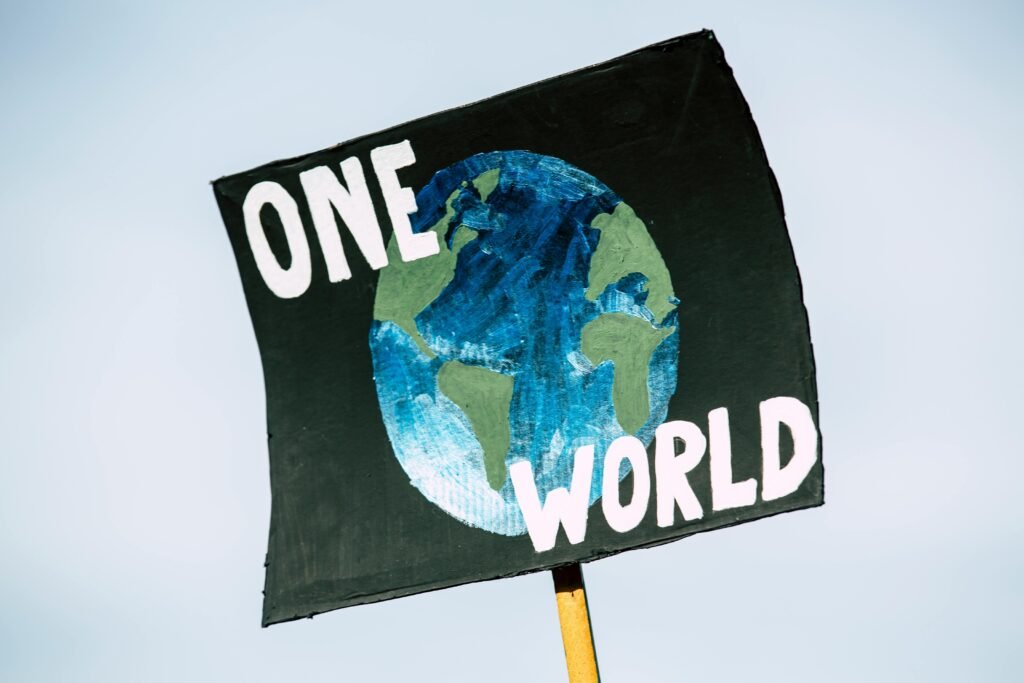Bayart & Bayart (2005) challenge widely accepted theories of identity, emphasizing that it is neither static nor unified, but rather a historically and religiously dynamic construct shaped by ideologies and political agendas. Cultural purity, he argues, is not a reflection of society but a deliberate political strategy, reinvention of differences.
Global processes produce a multifaceted influence on cultural practices and national identity across many parts of the world, typically inducing a complex dynamic of assimilation, resistance, reinterpretation, and the reinvention of difference.
• Phobia of Homogeneity vs. Re-invention of Difference:
The modern world is afflicted with a “general unease with respect to identity” and an anxiety that difference is being eroded because of phenomena including modernization, Americanization, and television. Nevertheless, despite this terror, globalization is characterized by a “combination of interconnection and heterogeneity”.
Experts observe that the process is inclined to be the “reinvention of difference,” creating “identity-related particularisms” rather than a homogenized global culture. In other words, even as global forces are borrowed, they are always reinterpreted and recontextualized in terms particular to locations. For instance, a “cultural biography” identifies that a Mercedes in Germany carries a particular cultural value in relation to a Mercedes in Africa.
Cultural Adjustment and Political Strategy:
Japan: Despite the so-called “Coca-Colonization” perceived at the time, the evidence suggests that the embrace of certain external elements, like Coca-Cola, did not correlate with cultural appropriation or loss of internal values like friendship.
Similarly, Japan’s Meiji period saw contact and foreign cultures reshaping Japanese culture, but still the “culturalist myth” of the Japanese miracle prevailed. Even economic measures, like Deng Xiaoping’s “cat” approach to Chinese economic development, were seen as foreign to Confucian tradition in the classic sense but effective.
Turkey: Kemalism, as a “globalizing” ideology, aimed to liberate Turkey from “general ridicule” by embracing Western characteristics, but simultaneously also aimed to reclaim a specific ‘Turkish’ culture, and sometimes in contradiction with older Ottoman traditions. This is an attempt to synthesize foreign influences with a forceful national identity.
Iran: The Iranian revolution, which has widely been perceived as religious in character, is characterized as a “political revolution that worked within a religious cloak.”.
The fate of the Persian empire is linked to being proud of their country and seeking symbols of statehood, such as nuclear capability.
Concepts such as ketman or taqiyah (guile or deception) are brought in not as bad per se but as religious concepts which allow actions when religion’s or empire’s interests come into play. This shows the way religious traditions become reinterpreted and employed in a globalized political order.
Africa: The European colonizing powers played a significant role in shaping African identities and political leadership. Mobutu’s regime, for example, employed colonial imagery like “Bula Matari” (the rock-breaker) and borrowed images like a leopard skin hat, traditionally representing power for the Bantu people, to legitimize his rule.
This suggests a reformulation and reinterpretation of earlier symbols in new political orders. Missionary work also contributed to “reinvented difference,” since the formation of “Independent Christian Churches” blended African “ritual” with the expression of “Africanness” independent of Western religious tact. The idea of African traditions providing a “moving continuity” highlights their moldability to colonial endeavors, rather than a simple destruction. Furthermore, the “formation” of ethnicity in Africa is accounted for as a response to new institutional frameworks and resource allocation, rather than mainly an in-built tribal identity. While there is a “myth of the chief,” African people have also fought against chiefs, which implies internal conflict and multiple political dynamics as well as traditional belief.
India: Indian nationalists have strategically utilized “tradition” in violent political agendas, incorporating foreign concepts such as “egalitarian individualism” into Hinduism. Indian princes facilitated the support for the destruction of Mughal rule and the unification of the imperial monarchy in favor of the British crown, illustrating how power in situ cooperated with emergent imperial powers to reconstruct the political and cultural environment.
Contradictions and Complexities:
Sources highlight that the “subjective feeling of ‘Europeanisation’ was not accompanied by an actual convergence with Western social practices”.
The concept of object “cultural imaginare” is most significant in describing how representations and misconceptions about culture influence international relations as well as domestic politics, at times leading to “misunderstanding other peoples”.
The thesis that an “ethnic” identity is merely a “state of consciousness” and not a brute fact resists reductionist culturalist explanations of conflict.
The sources also state that some aspects of “modernity” (e.g., in India) are described as a “fig-leaf con-concealing modernity” while posing as restoring a “golden Vedic age,” which is a strategic blend of old demands and new reality.
II:
Lastly, the “interweaving of traditions” suggests there is no displacement of local cultures by global forces but rather a dynamic, often contradictory, exchange that remakes.
Goswami (2020) Cultural identity, particularly in postcolonial contexts like the Caribbean, is a dynamic process of becoming—shaped by history, power structures, and continuous transformation. It is not static but constituted through historical narratives, representation, and positioning rather than an unchanging essence.
1. Identity as a Process of Becoming
Colonialism imposed regimes of representation that constructed colonized peoples as the “Other,” a process that was not merely external but internalized, shaping self-perception. This led to an “inner expropriation of cultural identity,” leaving individuals “without an anchor, without horizon, colorless, stateless, rootless.”
Thus, cultural identity is unstable, formed through “points of identification” within historical and cultural discourses—a positioning rather than a fixed essence.
2. The Dual Vectors of Caribbean Identity
Caribbean identity emerges from two simultaneous forces:
- Similarity and Continuity: Connection to ancestral traditions.
- Difference and Rupture: The violent disruptions of slavery, colonization, and migration.
Colonialism both fragmented and unified Caribbean people’s serving ties to the past while creating shared experiences under plantation economies. Difference persists alongside continuity, producing a syncretic identity.
3. The Three “Presences” Shaping Caribbean Identity
A. Presence Africaine: The Site of the Repressed
Africa exists in the Caribbean as a “site of the repressed” silenced yet present in language, religion, and music. It is not a literal origin but an “imagined community”, reconstructed through movements like Rastafarianism and reggae.
B. Presence Europeenne: Power and Ambivalence
Europe’s dominance imposed Eurocentric frameworks, leading to a “splitting and doubling” of identity. The relationship with Europe remains a negotiation of power, resistance, and syncretism.
C. Presence Americaine: The New World as Primal Scene
The Americas are the site of cultural collision and creolization. Caribbean identity is inherently diasporic, defined by heterogeneity and hybridity, evident in Creole languages, music, and religious practices.
4. Cultural Identity as Representation and Retelling
Identity is constructed within representation—through cinema, literature, and music. These forms do not just reflect identity but create new subjectivities, offering “places from which to speak.” This process is not about recovering the past but retelling it—reworking history to forge new points of identification.
References:
Bayart, J.-F., & Bayart, J.-F. (2005). The illusion of cultural identity (Rev. and updated ed). University of Chicago Press.
Goswami, M. (2020). Benedict Anderson, Imagined Communities (1983). Public Culture, 32(2), 441–448. https://doi.org/10.1215/08992363-8090180

